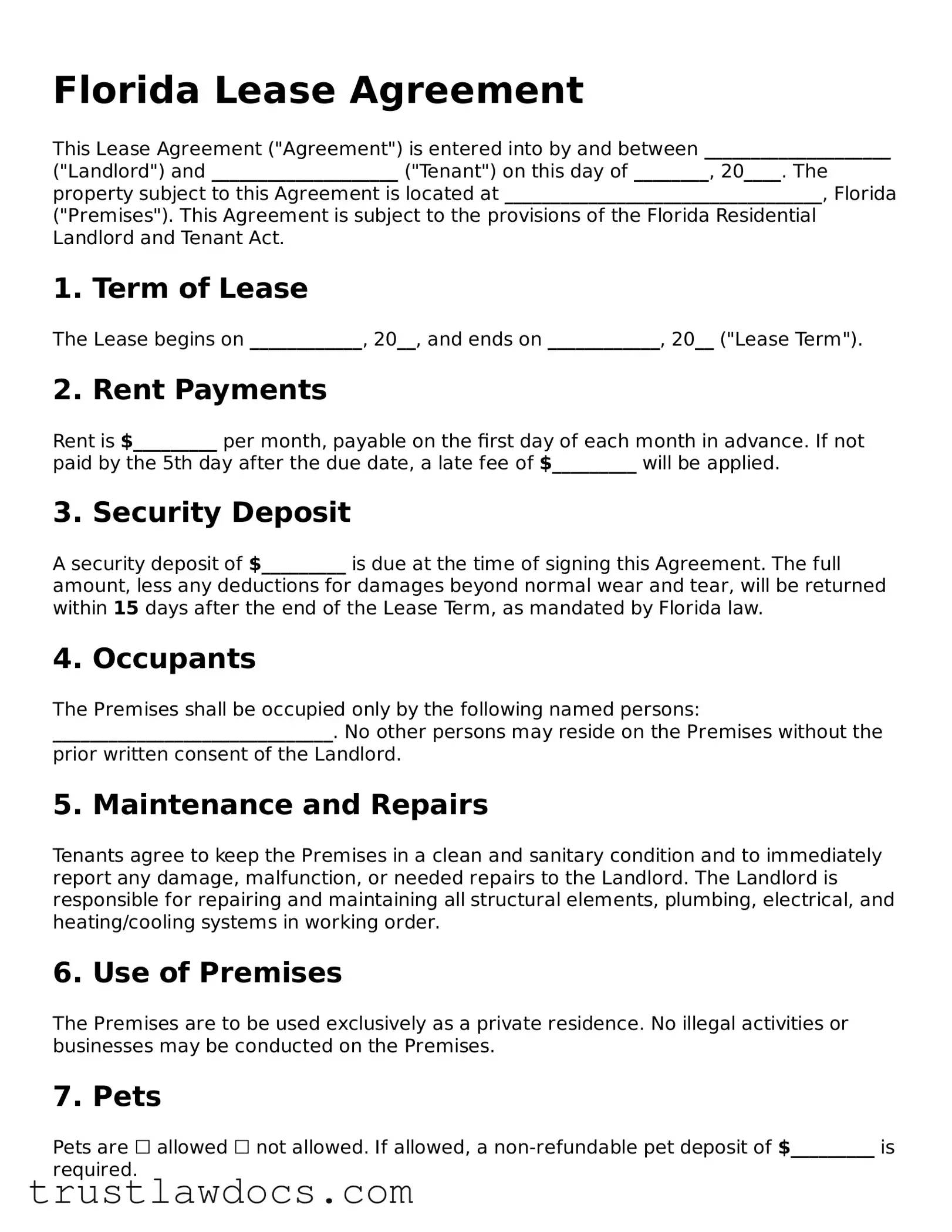Florida Lease Agreement
This Lease Agreement ("Agreement") is entered into by and between ____________________ ("Landlord") and ____________________ ("Tenant") on this day of ________, 20____. The property subject to this Agreement is located at __________________________________, Florida ("Premises"). This Agreement is subject to the provisions of the Florida Residential Landlord and Tenant Act.
1. Term of Lease
The Lease begins on ____________, 20__, and ends on ____________, 20__ ("Lease Term").
2. Rent Payments
Rent is $_________ per month, payable on the first day of each month in advance. If not paid by the 5th day after the due date, a late fee of $_________ will be applied.
3. Security Deposit
A security deposit of $_________ is due at the time of signing this Agreement. The full amount, less any deductions for damages beyond normal wear and tear, will be returned within 15 days after the end of the Lease Term, as mandated by Florida law.
4. Occupants
The Premises shall be occupied only by the following named persons: ______________________________. No other persons may reside on the Premises without the prior written consent of the Landlord.
5. Maintenance and Repairs
Tenants agree to keep the Premises in a clean and sanitary condition and to immediately report any damage, malfunction, or needed repairs to the Landlord. The Landlord is responsible for repairing and maintaining all structural elements, plumbing, electrical, and heating/cooling systems in working order.
6. Use of Premises
The Premises are to be used exclusively as a private residence. No illegal activities or businesses may be conducted on the Premises.
7. Pets
Pets are ☐ allowed ☐ not allowed. If allowed, a non-refundable pet deposit of $_________ is required.
8. Governing Law
This Agreement is governed by the laws of the State of Florida. Any disputes arising from this Agreement shall be resolved through mediation or in a Florida court of competent jurisdiction.
9. Additional Terms and Conditions
_________________________________________________________
_________________________________________________________
Landlord's Signature
________________________________ Date: _______________
Tenant's Signature
________________________________ Date: _______________
This document is not a substitute for legal advice or services. Refer to Florida state laws and consult with a legal professional for complex situations or advice.
